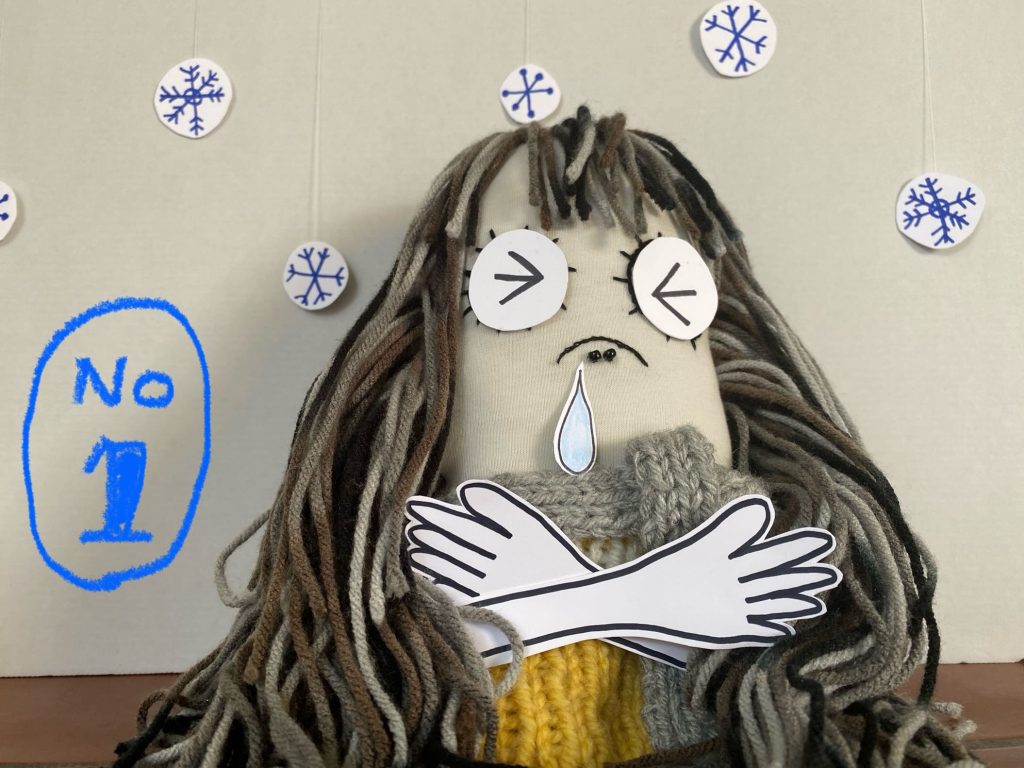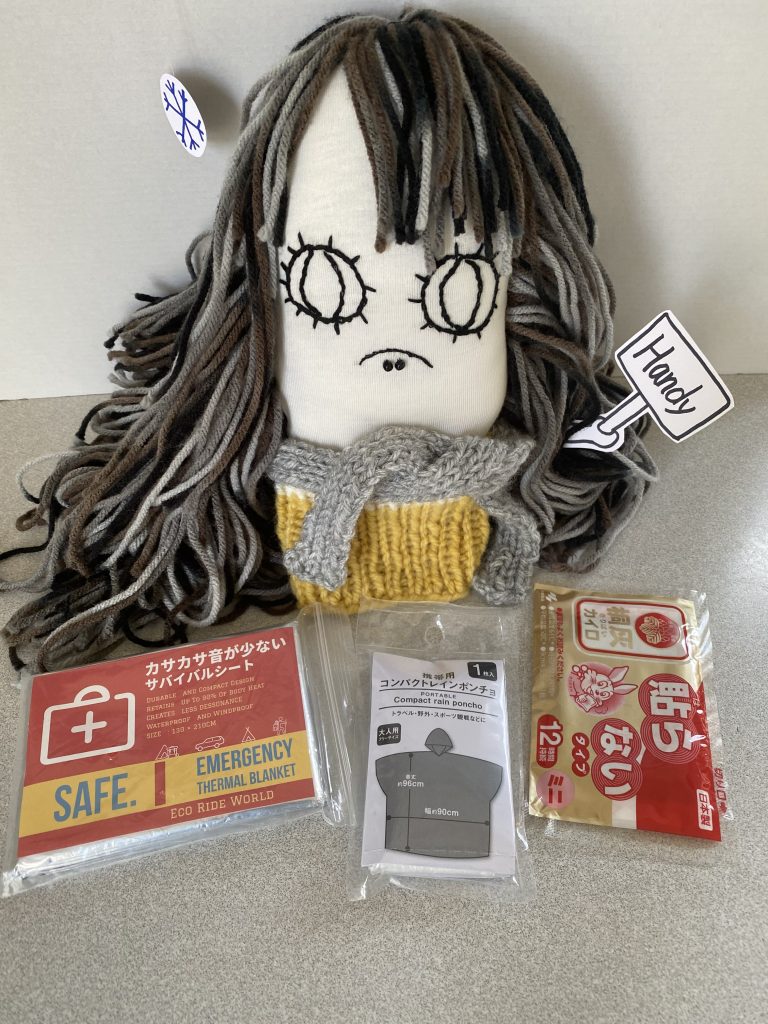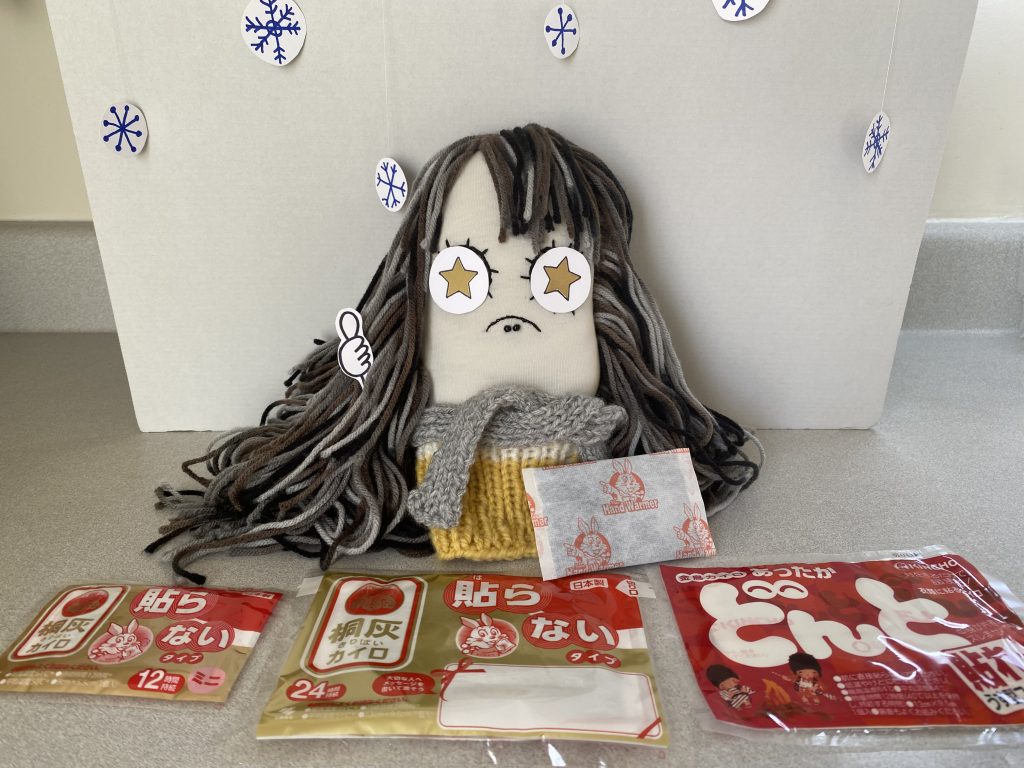
Why might we get hypothermia in an emergency situation?
“My area has a warm climate, all year around.
I think I am OK!”
“Oh no! I didn’t prepare anything for power outages…”
“I don’t want to carry heavy stuff in my bag.”
Surprisingly, keeping your body warm is tougher than you might think. In the worst case scenario, where you’re stuck out in the cold, you might suppose that simply keeping your body moving will help keep you warm, but that is not a good option. If you find yourself in an unexpected situation, in the wintertime, and you aren’t prepared, you might have a serious problem: hypothermia. Hypothermia is a serious condition, caused by exposure to cold, that can lead to unconsciousness and even death. Even if you live in a warm climate, when you get wet from rain or your t-shirt becomes soaked in sweat, you may experience hypothermia. So please, do not forget about protection against the cold, for everybody.
Do you remember the survival rule of 3’s (post # 2)? You can only survive for about 3 hours in extreme heat or cold.
How can your body lose heat? Here are some examples:
- Exposure to extreme cold (e.g., winter storms and power outages).
- Your body heat transferring to other things (e.g., lying on the ground, exposure to water by flooding, and falling in the river, lake or ocean).
- Moving air drawing heat out of your body (e.g., wind chill).
- Wet clothing for extended periods (e.g., flooding, hurricanes, or even rain).
- Loss of heat through sweat. (The body cools itself down. Sweating is a way for the body to lose heat through evaporation.)
These situations can result in Hypothermia. Hypothermia is a possibly fatal condition in which the body’s core temperature falls below 35℃ ( 95℉), making it impossible to maintain normal body functions. We really need to avoid it, and we must take steps to prevent it. Preparing for the possibility of a sudden unforeseen crisis is very important, and we need to learn how to keep our bodies warm in the cold.
Remember, during a crisis, everybody will be thinking the same thing: evacuate and go to the nearest evacuation shelter. What is the maximum capacity of the nearest evacuation shelter? You think the shelter has enough warm clothes and blankets for everyone? If it’s a temporary, local, neighborhood evacuation shelter, will they have enough emergency supplies? After a big disaster, can we expect the government to send help in under 3 hours? I suspect things will not go so smoothly, and we could very easily be left shivering and miserable, out in the cold.
Can you imagine after a big earthquake, running away from your home in the early morning, wearing your PJ’s, while the snow falls gently all around?
How to prevent hypothermia?
- Cover your skin. Don’t forget to cover your head and hands. (30% of heat loss is through the head.) Wear a hat, a scarf, and gloves. Never wear cotton in cold weather. (Cotton absorbs moisture and keeps it next to your skin, making you cold.) Avoid tight clothing (it reduces blood circulation).
- Choose proper clothing for outdoor conditions, and dress in layers.
- Stay dry. Change wet clothes (including socks and mittens) as soon as possible.
- Avoid overexertion, as it can lead to sweating and wet clothes. Keep active when it’s cold, but not to the point that you’re sweating.
- Drink plenty of fluids and warm drinks. (You may not feel as thirsty in cold weather, but you still lose fluids through your sweat and your breath. Do not drink alcohol or caffeine because they both increase heat loss.)
- Eating foods with carbohydrates can give you quick energy.
What did we prepare?
We need to prepare our emergency cold protection gear in 3 different places, each with its own requirements: the compact emergency bag, the emergency evacuation bag, and the short-term stockpile in your home. Today, I will talk about setting up emergency cold weather gear for your compact emergency bag.
The compact emergency bag is for helping you get back home (or get to an emergency shelter) during a crisis. This bag is meant to be carried all the time, whenever you’re out and about, during the day. You would carry it, for example, to the office, at school, while shopping, etc. Do you usually carry some lightweight outerwear with you when you go out? Or have you ever worn a raincoat? I think many people have at some point thought “I wish I had an extra jacket.” For example, when you left home it was hot, so you didn’t bring a coat, but in the afternoon it started to get chilly. Or a time when you were waiting in a long line, for an attraction at an amusement park, and it started raining… You get the idea. Even thought it is not a true emergency, some kind of lightweight outerwear or raincoat would really help you.

Set up disposable raincoats and emergency blankets in your bag, so you won’t get wet. I set up this emergency cold gear.
If you’re away from home when a big earthquake hits, you might have to walk home. These things will not always happen on a sunny day, or even during the daytime. It might be snowing, if might be raining, it might be dark outside. Your kids might also have to wait for you to pick them up at school, in a power outage. Even a thin disposable raincoat will help keep them warm. I know kids dread carrying extra stuff in their backpacks; nobody likes a heavy backpack. But nowadays, you can get many kinds of emergency cold-weather gear over the internet. Please check it out.
Also, have you ever used hand warmers (or heat pads)? Japanese people call these “Hokkairo,” or “Donto” and we use them a lot in wintertime. I usually put one on my lower back to keep warm. Each person uses them in a different way to keep their body warm.

Keeping your body warm is actually very hard without any equipment. You can try out various emergency cold gear, during the winter season. And then you can pick up your favorites.
Remember, “Protect your life by yourself” (自分の命は自分で守る). You need to survive first, and then you need your emergency supply. No matter how well you prepared your emergency supplies, if you die, then all of your preparations will have been for nothing. First and foremost, keep your health up all the time. Build your stamina so that if you need to, you can evacuate as quickly as possible. Stay healthy.
See you next time!
Pingback: How to Stay Warm in an Emergency? (2) #57 – Goriyama